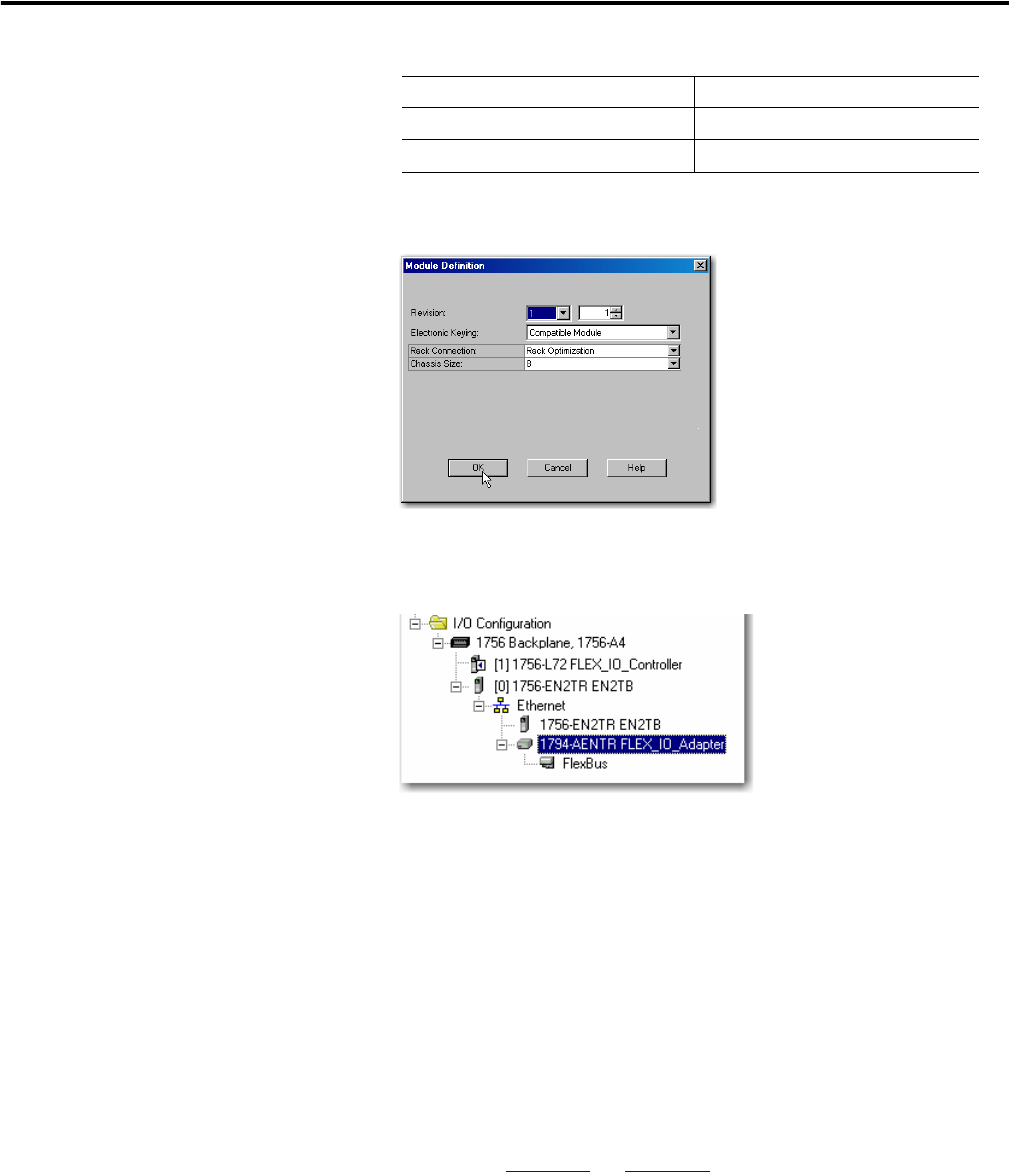Owner manual
Table Of Contents
- 1794-UM066A-EN-P FLEX I/O Dual Port EtherNet/IP Adapter Modules User Manual
- Important User Information
- Preface
- Table of Contents
- 1 - Overview of FLEX I/O and Your Redundant EtherNet/IP Adapter Module
- Overview
- The FLEX I/O System
- Adapter Features
- Types of Adapters
- Hardware and Software Compatibility
- What the Adapter Does
- Use of the Control and Information Protocol (CIP)
- Understanding the Producer/Consumer Model
- Specifying the Requested Packet Interval (RPI)
- Support of Rack Optimized and Direct Connections
- Chapter Summary
- 2 - Install Your FLEX I/O Adapter
- 3 - Configure the Adapter for Your EtherNet/IP Network
- 4 - Rack Optimized Discrete I/O
- 5 - Analog I/O with Direct Connection
- A - Interpret Status Indicators
- B - Specifications
- C - Configure the RSLinx Ethernet Communication Driver
- D - Adapter Web Dialogs
- Index
- Back Cover

Publication 1794-UM066A-EN-P - February 2012
Rack Optimized Discrete I/O 29
5. If you need to change the values, click Change...
The Module Definition dialog opens.
6. Click OK to accept the configuration.
The 1794-AENTR adapter appears indented under the local 1794-ENBT
in the I/O Configuration folder.
Add the FLEX I/O Modules to the I/O Configuration
You must now add the FLEX I/O modules to the I/O Configuration List under
the 1794-AENTR adapter.
In this example, you add a 1794-IB16 digital input module and a 1794-OB16
digital output module with standard configurations. Use these steps as a guide
when you are configuring different I/O modules for your system.
Comm Format Rack Optimization
Chassis Size 8 (default)
Electronic Keying Compatible Module
TIP
This example application uses I/O module default configurations.
For more information, refer to the I/O module publications
1794-IN093
and 1794-IN094.










